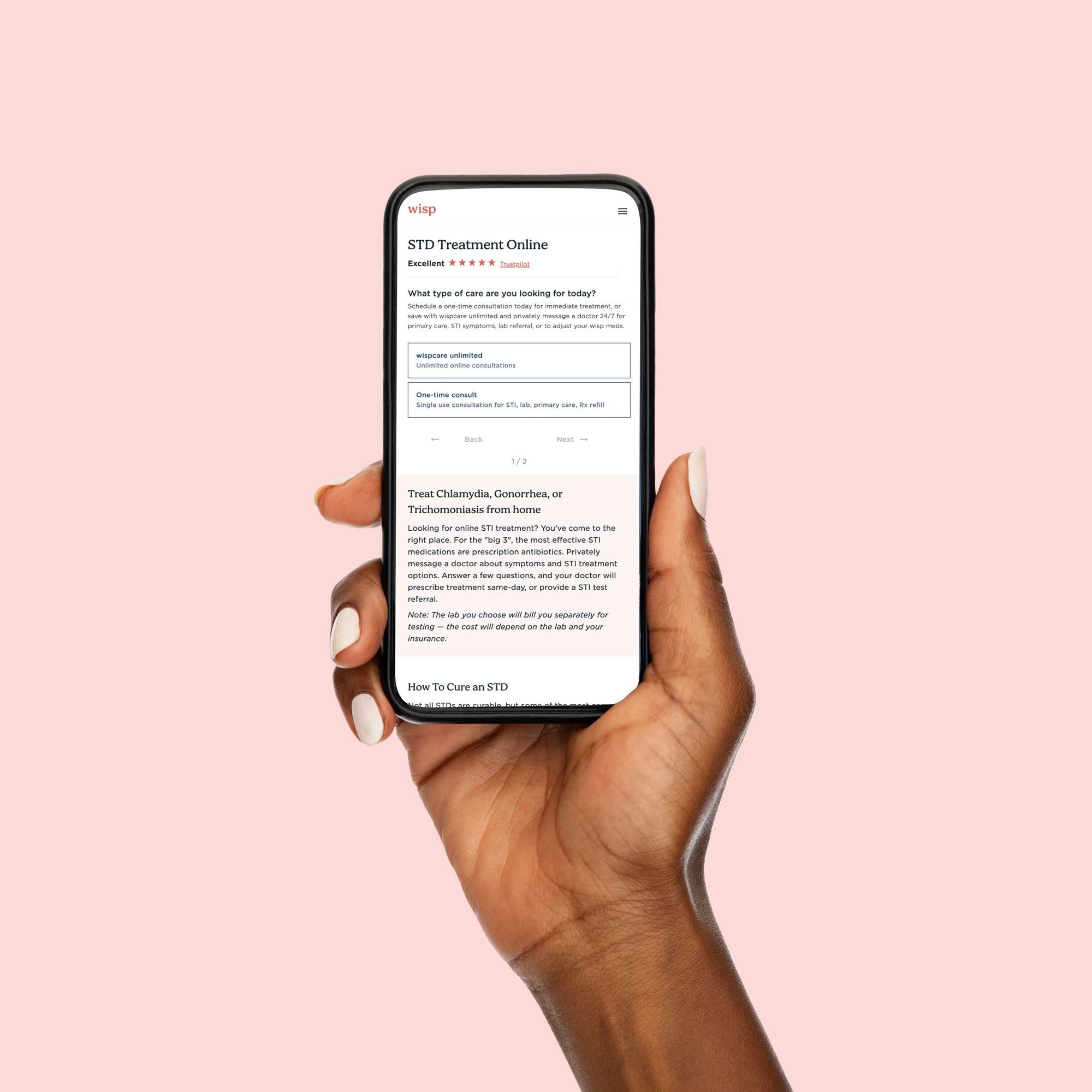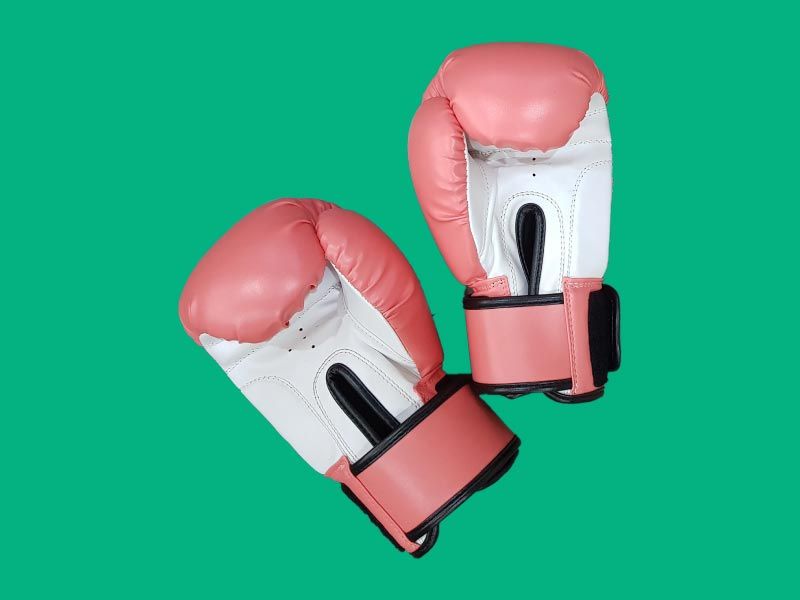
Dealing With a Hemorrhoid vs. Fissure
Published on June 30, 2025
Written by Kathleen Morrison
Medically Reviewed by Andrea Sleeth WHNP-BC, MSCP
Butt stuff isn’t always fun—and when something feels off down there, it’s totally normal to have questions. If you’re dealing with pain, itching, or bleeding during bathroom trips, you might be wondering if it’s a hemorrhoid, an anal fissure, or something else entirely.
Hemorrhoids and anal fissures are both common issues, and while they can both show up with similar symptoms (like pain or blood when you poop), they’re actually two different things.
Hemorrhoids happen when veins in your butt area get swollen—think pressure from constipation, pregnancy, or just sitting for long stretches. A fissure, on the other hand, is a tiny tear in the lining of your anus. Ouch, yes—but treatable.
What's actually happening
When something’s sore or stinging back there, you want answers without the awkward Googling spiral. So here it is in simple terms.
- Hemorrhoids = swollen blood vessels around or inside your bum. They can show up from straining on the toilet, pregnancy, or sitting too long.
- Anal fissures = tiny tears in the skin lining your anus—basically like a paper cut in a very sensitive spot.
Both are common. Both can hurt. But they’re different in how they feel and how you treat them.
Location
Your butt has zones (yes, really), and where the pain shows up can be a big clue.
- Internal hemorrhoids hang out inside your anal canal, above the dentate line (a nerve-light zone), so they’re often painless—until you spot blood during a wipe.
- External hemorrhoids form just under the skin outside your anus, where nerve endings are very much present. Translation: they can really hurt.
- Fissures usually tear at the back end of the anal canal—an area with less blood flow, which makes it slower to heal and more likely to sting during bowel movements.
Hemorrhoids 101
Hemorrhoids actually aren’t some weird medical mistake—they’re actually part of your anatomy. Your body has little spongy cushions made of blood vessels and connective tissue in your anal canal, and they help keep things sealed up tight until you’re ready to go.
But sometimes, those blood vessels get too full, like when you’re straining on the toilet, pregnant, constipated, or just sitting around for way too long. When that happens, the veins swell, the tissue stretches, and bam: hemorrhoid.
That’s why prescription treatments for hemorrhoids are all about helping shrink those swollen veins and easing the pressure, so your booty can chill out and start to feel better.
Wisp treatment options are available only after consultation with a licensed medical professional. You should consult with your healthcare provider before starting a new supplement or treatment regimen. Individual results may vary.
Fissures 101
Anal fissures are closely tied to the tight ring of muscle (aka your anal sphincter) that helps control your bowel movements. When that skin tears? Your body’s first move is to tense everything up to protect the area.
But here’s the catch: when that muscle stays too tight, it slows down blood flow, which makes it harder for the fissure to heal. Add in the fact that every poop stretches the area again and again, and you’ve got a frustrating, painful cycle.
To break it, treatments usually focus on helping those muscles relax and boost circulation so the tear can finally get the chance to heal. (And yes, there are medical creams that can help you do just that.)
How to tell the difference
Still not sure which one you’re dealing with? Tune in to when and how the pain shows up:
- Hemorrhoid pain is usually dull, achy, and constant, especially with external ones. If there’s a clot, the pain might be sharper and last for days.
- Fissure pain is sudden and sharp during a bowel movement, then turns into a burning or throbbing sensation afterward. It’s intense—and hard to ignore.
What about bleeding?
- Hemorrhoids usually cause painless, bright red blood, either on the toilet paper or in the toilet bowl.
- Fissures cause a smaller amount of blood, but it comes with serious pain.
How they affect your toilet time
Both conditions can mess with your bathroom routine, but in different ways:
- Hemorrhoids might make you feel like you can’t fully finish, or make you avoid going altogether because it’s uncomfortable.
- Anal fissures often create real fear around going to the bathroom. You might hold it in, which makes things worse, leading to harder stools and more pain.
Causes and risk factors
No one wants to think about what’s going on down there, but understanding the causes of hemorrhoids and fissures can help you stay one step ahead when your booty starts acting up. While some of the risk factors overlap, each condition has its own backstory.
Constipation, diarrhea, and straining
Yep, your bathroom troubles (and general habits) have a big say in what happens down there.
- Straining on the toilet puts extra pressure on your rectal veins (hello, hemorrhoids) and stretches the delicate skin of your anal opening (leading to fissures).
- Chronic constipation means harder stools that take more effort to pass, and that can cause tears or make swollen veins worse.
- Diarrhea, surprisingly, can also lead to anal fissures. Too many bathroom trips can irritate the skin and throw off healing.
- Sitting on the toilet too long (scrolling TikTok, we see you) has a similar effect. That constant pressure adds up.
It becomes a frustrating cycle: straining causes pain, pain makes you avoid going, and avoiding going leads to more straining. Vicious.
IBD and other chronic conditions
If you live with inflammatory bowel disease—like Crohn’s or ulcerative colitis—your risk for both hemorrhoids and fissures goes way up. It’s not just about how often you go; the inflammation from IBD makes tissues more fragile and prone to injury. With Crohn’s especially, fissures can show up in unexpected places, and they’re often slower to heal.
The urgency and frequency of IBD flare-ups also don’t do your butt any favors because your skin doesn’t get much chance to recover between bathroom trips. And when your whole system is inflamed, healing takes longer, plain and simple.
Poor blood flow
Circulation might not be the first thing you think about when your butt’s hurting, but it matters—a lot.
Hemorrhoids are basically a blood flow issue: when blood pools in the veins around your anus (thanks to gravity and toilet scrolling), they swell and stretch the surrounding tissue.
Anal fissures, on the other hand, need blood flow to heal. Most fissures happen in a spot that naturally gets less circulation. And when too-tight anal sphincter muscles clamp down—like they tend to do when you’re in pain—it slows blood flow even more. That’s why some fissures become chronic and just won’t seem to go away.
How to get them diagnosed
The first step to getting the right diagnosis is tuning in to your symptoms.
If your pain is more of a constant ache, especially when sitting or moving around, you might be dealing with hemorrhoids.
If it feels sharp and intense during a bowel movement—followed by hours of burning or throbbing pain—it’s likely a fissure.
Bleeding patterns can also help clue you (and your provider) in.
Physical exams and inspections (sorry)
Okay, yes—it can feel more than a little awkward to have someone take a peek at your bumhole, even if they're a medical professional. But the good news is that the whole thing is usually quick, gentle, and very helpful in figuring out what’s going on.
If the issue is external—like a visible hemorrhoid or a surface-level fissure—your provider might be able to spot it just by looking. Hemorrhoids usually appear as soft, bluish lumps. If one’s thrombosed (meaning there’s a clot inside), it might look firmer and darker.
Fissures tend to show up as small tears, often toward the back side of the opening. Fresh ones look like paper cuts. Chronic ones might have raised edges or visible muscle tissue.
If the problem is internal, your provider might do a gentle exam using a gloved finger (called a digital rectal exam) or a small tube called an anoscope. This helps them see or feel internal hemorrhoids and figure out exactly what’s going on.
When it might be something more
Most of the time, it’s either a hemorrhoid or an anal fissure—but sometimes there’s a little more to the story.
If you notice constant drainage from a small hole near your anus, or you keep getting painful abscesses in the same spot, you could be dealing with an anal fistula. These are little tunnels that form between the inside of your anus and the skin outside, and they’re usually the result of an infection. They’re also a good reason to see a provider ASAP.
Other signs to pay attention to include:
- Blood that’s darker or mixed into your poop (rather than bright red on the outside)
- Severe pain that’s getting worse or not responding to treatment
- A lump that feels firm or doesn't change over time
- Fever, chills, or signs of infection
If anything feels off, don’t wait—getting it checked out is always the right move. When things aren’t more complicated, prescription treatments can make a world of difference, fast.
How to treat hemorrhoids and anal fissures
No one wants to deal with anal pain and or unexpected rectal bleeding—but if you're here, you’ve got options to get the. sorted.
While hemorrhoids and anal fissures can show up in the same general area, they need different kinds of care. So getting the right treatment matters—and starting early makes a big difference.
Medical treatments
When you’re dealing with irritation, discomfort, or that all-too-familiar sting during bathroom time, the quickest way to start feeling better is with prescription medication that’s designed to target exactly what’s going on.
Prescription hemorrhoid creams and suppositories that are formulated for your specific needs are the way to go. These meds work behind the scenes to ease inflammation, calm anal pain, and support faster healing.
For anal fissure treatment, medicated creams like nitroglycerin or diltiazem help relax tight muscles and boost blood flow, giving the area a better shot at healing. Botox injections can also help the muscle chill out, especially if spasms are keeping the fissure open.
In-office procedures
Sometimes prescription creams aren’t enough, especially if internal hemorrhoids or chronic fissures are hanging around for the long haul. That’s where (minimally invasive) medical treatments step in.
For internal hemorrhoids, rubber band ligation is one of the most common go-tos. Your provider places a tiny band around the base of the hemorrhoid, and boom—it loses blood supply and eventually falls off. Other options include sclerotherapy (a small injection that shrinks the hemorrhoid) or infrared coagulation (a quick heat-based procedure). These all happen right in the office, no surgery required.
Chronic fissures that stick around longer than 6–8 weeks may need a different approach. In really persistent cases, a small surgical procedure called lateral internal sphincterotomy can stop the cycle for good—and has a super high success rate.
At-home TLC
While prescription and in-office treatments do the heavy lifting, at-home care can be a total lifesaver for daily comfort—especially if you’re dealing with anal pain or ongoing rectal bleeding.
- Warm sitz baths are a must. A few inches of warm (not hot!) water for 15–20 minutes, a few times a day, helps relax muscles and keep things clean.
- Ice packs can help ease swelling and calm irritation—just wrap them in a cloth and apply for short bursts.
- Petroleum jelly before a bowel movement can help fissures feel less ouch-y.
- Witch hazel pads or gentle wipes can cool things down externally.
- Fiber + fluids = soft, easy poops. Aim for 25–35g of fiber per day and plenty of water. If you need help hitting your fiber goals, a supplement like psyllium is a good backup.
- Skip the doom scroll: don’t hang out on the toilet for too long, and try to avoid straining or holding your breath when you go.
Bonus tip: Some people find that sitting backward on the toilet (yep, facing the tank) changes the angle enough to make things less painful—especially for anal fissures.
Long-term healthy bum tips
Once you’re feeling better, you want to keep it that way. Here’s how to support bowel health and stay ahead of any future flare-ups:
- Go when you need to—but don’t push it.
- Try to establish a regular routine (your body loves a schedule).
- Use a footstool to elevate your knees and straighten things out down there.
- Keep your fiber intake high, stay hydrated, and move your body regularly.
- Be gentle when cleaning—wet wipes or rinsing with water are your best friends.
Know your bum's business
When it comes to anal health, knowing what you’re dealing with is half the battle. The whole hemorrhoid vs. fissure issue can feel confusing if all you know is that there's pain and blood.
In the end, they're two different situations that call for two very different game plans to avoid unnecessary complications.
Hemorrhoids happen when the veins in your bum area get swollen and irritated—sometimes popping up inside or outside your anus. Fissures are tiny but mighty tears in the anal tissue that can bring that sharp, stinging pain during (and after) a bowel movement.
Bottom line? Don’t wait it out. Your butt deserves better. Whether you’re trying a sitz soak, adjusting your fiber intake, or chatting to a healthcare provider about prescription treatments (hi, we can help with that), early care = quicker comfort.
Wisp makes it easy to get personalized, discreet care from home. Get the right treatment for your bum, fast.
Frequently Asked Questions (FAQ):
How can I tell if it's a hemorrhoid or fissure?
Hemorrhoids are swollen veins that can cause pressure, itching, and bleeding. Fissures are small tears that usually bring intense pain during pooping. It’s all about the pain pattern and what the bleeding looks like—talking to a provider can clear things up quickly.
Can a fissure turn into a hemorrhoid?
Nope. Fissures and hemorrhoids are separate issues in the anal area with different causes, but it’s possible to have both going on at the same time (we know—rude).
How do you fix a fissure?
Start with a soft-stool diet, warm baths, and topical creams that relax the area and boost blood flow. If it sticks around too long, your provider might recommend other options like muscle relaxants or even a minor procedure.
Does hemorrhoid cream work on fissures?
Not really. Hemorrhoid cream is great for hemorrhoids, but doesn’t do much for fissures. You’ll need something designed for that specific kind of tear to actually support healing.
This blog post is for informational and educational purposes only and should not be taken as professional advice. Always consult with a qualified professional before making any decisions based on the information provided here.

Hemorrhoid Treatment with Lidocaine
Starting at $39.00
Prescription treatment for itching, inflammation, and discomfort caused by hemorrhoids.



